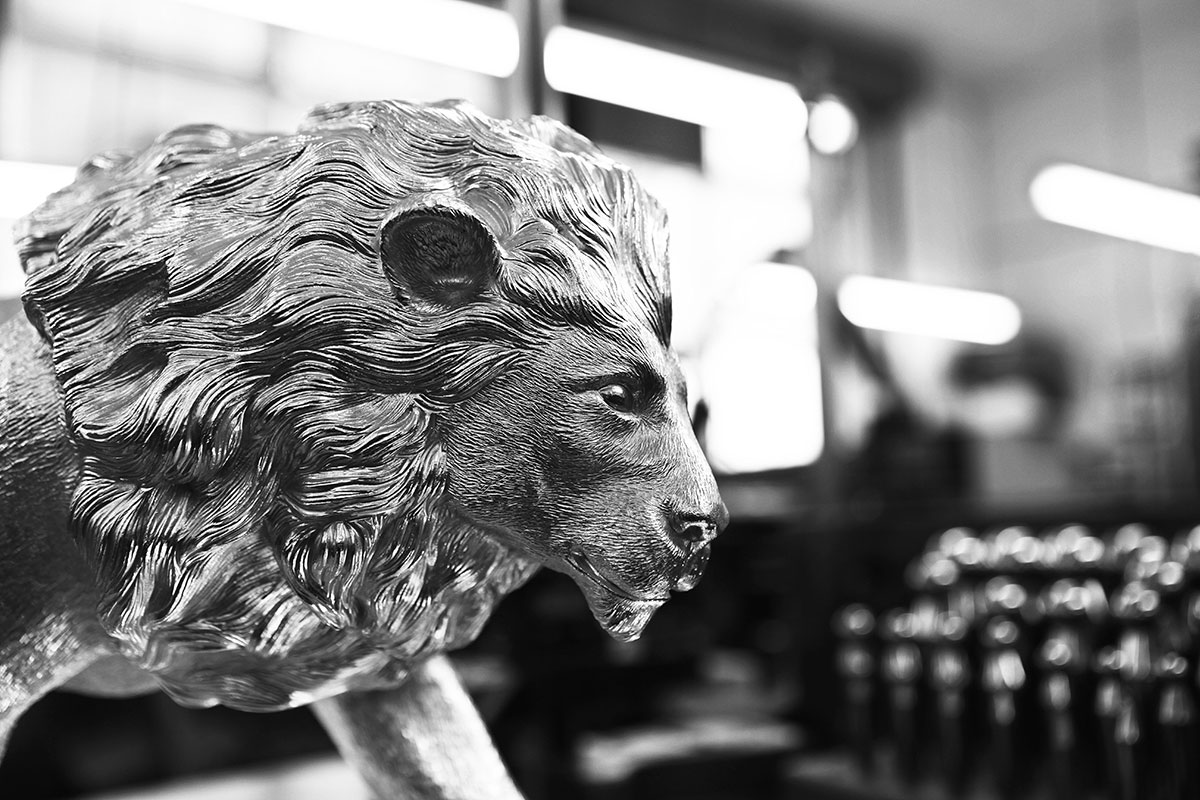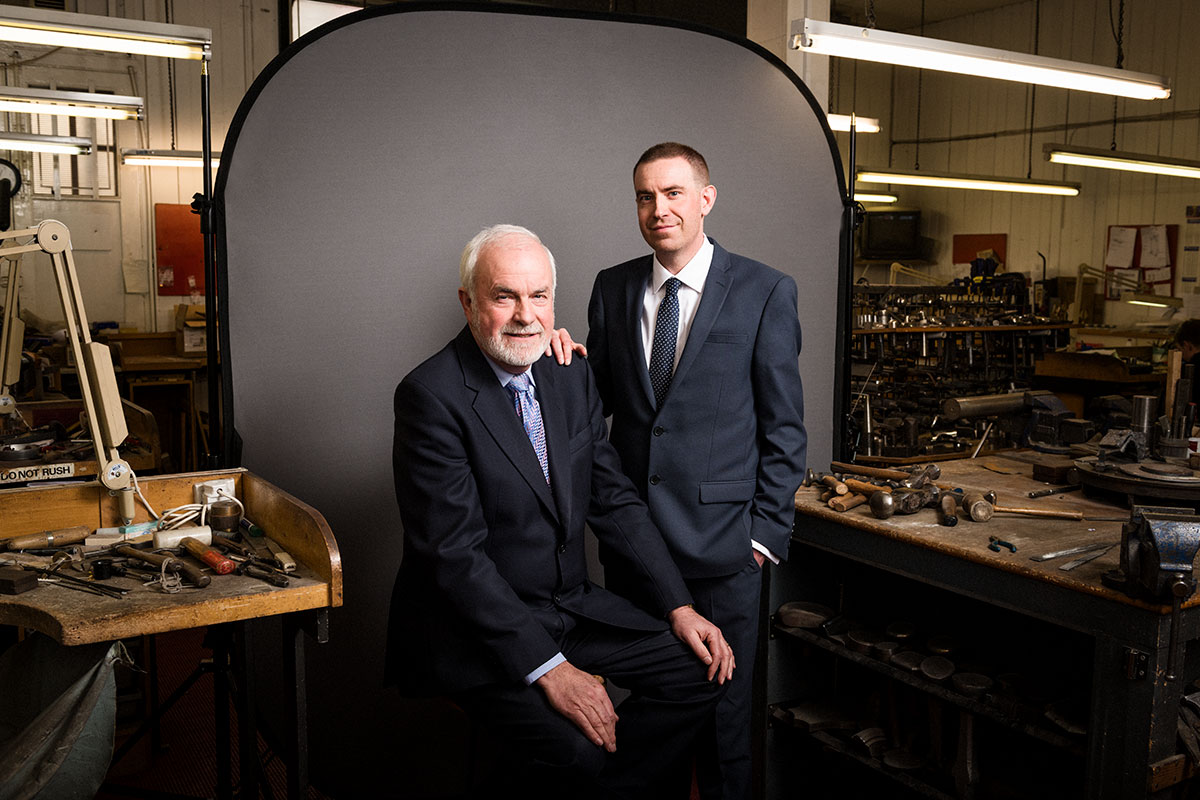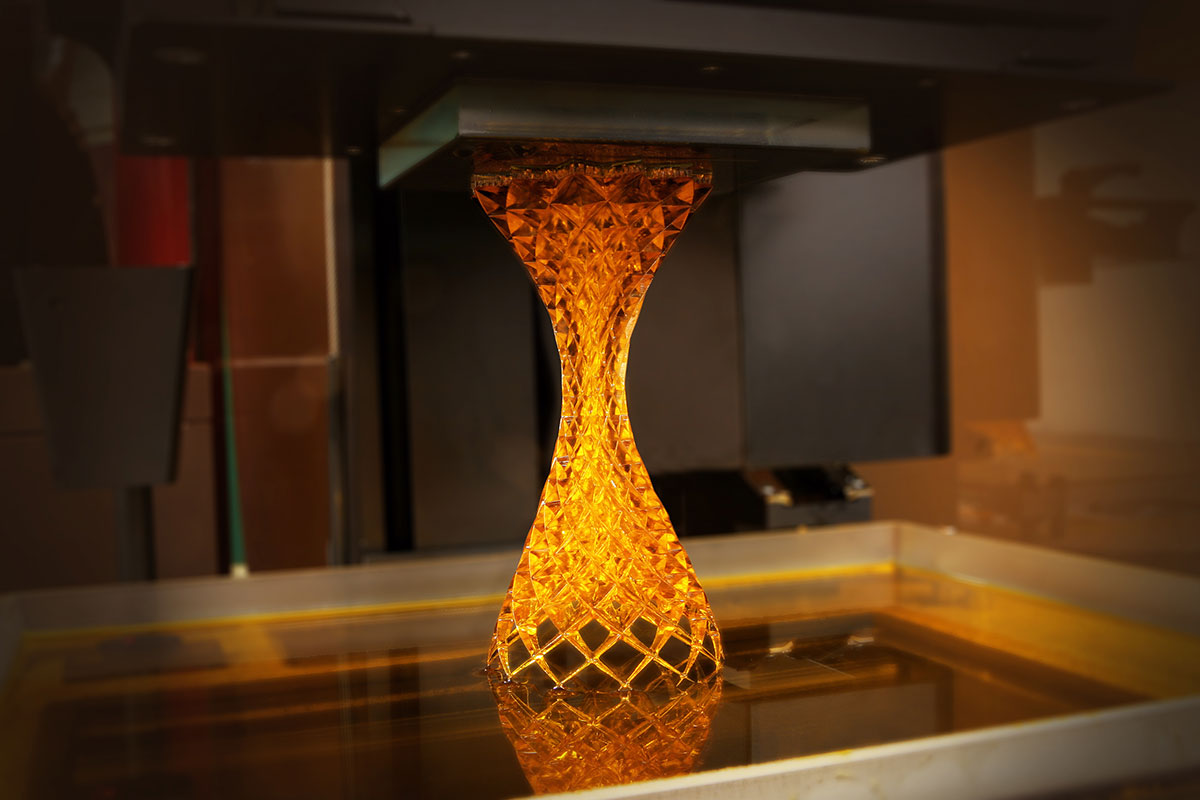This website uses cookies so that we can provide you with the best user experience possible. Cookie information is stored in your browser and performs functions such as recognising you when you return to our website and helping our team to understand which sections of the website you find most interesting and useful.
Inside the intriguing world of Grant Macdonald London, Britain’s finest silversmiths
By Rachel Ingram | 7 August 2019 | Lifestyle
Favoured by the Prince of Wales, the Royal Warrant holding silversmith shares the secrets to its success

Grant Macdonald jokes that he wasn’t born with a silver spoon in his mouth, so he learned to make one. It’s this drive, creativity and, some could say, stubbornness that’s made Macdonald Britain’s finest silversmith. Macdonald has been practising the art of silversmithing since the age of 14. He first made a name for himself in the 1960s, crafting ceremonial chains and coats of arms for the City of London’s famous guilds and livery companies. Word quickly spread of his expert workmanship and innovative designs and he’s since made 34 City Sheriffs’ badges and chains, incorporating each Sheriff’s interests and work into a unique design – a “biographic shorthand in gold or silver” – as well as a variety of items used for ceremonies or traditions within the City world, including loving cups, candelabras, lecterns and trophies.
By the early 1970s, his eponymous silversmiths, Grant Macdonald London, had become the workshop of choice for the West End’s leading luxury retailers. It was also called upon to craft custom masterworks for celebrities and royalty, in the UK as well as internationally. His work on the Silver Trust Collection can be found in 10 Downing Street, while bespoke pieces have been gifted to more than 30 heads of state and prime ministers around the world.
One of the most impressive commisions to date was the craftsmanship of the 6.4m Dresden Orb and Cross war memorial, crafted by hand in just six months using 19th-century techniques. Gifted to the city on behalf of the UK government following WW2, it now sits proudly atop Dresden Cathedral.
ROYAL SEAL OF APPROVAL
Grant Macdonald London (GML) has worked with royal families for many years, but in 2015 its relationship with the British monarchy was solidified when it was awarded a Royal Warrant, bestowed by the Prince of Wales. The regal endorsement took a lengthy five years to achieve, thanks to a strict process that only rewards those with whom the royals work regularly and consistently. “It was the proudest moment in the company’s history,” says managing director George Macdonald, son of Grant, who is today the company’s creative director.
Outside of the UK, GML’s largest market is the Gulf region. “The Middle East has been so good to us since the late 1970s when my father Grant first went out there,” he says. “Since then, it’s been our core business. We do a lot of gift pieces for Middle Eastern royal families, such as swords, clocks and tableware. We’ve also done some serious place settings, including all the silver cutlery, napkin rings, candelabras and china. Grant certainly got the knowledge of the culture and all the Islamic patterns, so we have a huge archive of pieces we’ve made over the years for various Middle Eastern countries.” >>
Related: These are the young designers ready to create a "better tomorrow" with their prototypes

OLD MEETS NEW
When George joined the company in 2003, he brought with him innovations, such as 3D printing technology, which have updated the company’s procedures and increased its capabilities. But despite these modernisations, the company remains true to its tradition and legacy of craftmanship.
“While we’re a bit old school, we’ve got good use of technology,” says George. “Our designers merge the two – we use a lot of rapid prototyping and 3D printing technology to help make very complicated pieces and intricate designs, and we also use traditional craftsmanship. Everything is designed in house, as well.”
But innovation isn’t alien to Grant. “My father has always been behind new technologies,” he says. “In the 1970s and 1980s, he used electro-texturing to create intricate pattern work. And then, in the ‘90s, we created a laser company called Capital Lasers to get more and more intricate silverware made.”
Despite this, George insisted that, at Grant Macdonald London, at least, machinery will never replace the artisans. “Technology is only ever going to be used to really help produce more intricate patterns and create things that we can’t such as prototypes. The hand work and hand-finishing of our pieces really make them. There is no replacement for it.”
Walking through the workshop, which is hidden behind a nondescript red door on Bear Lane, this becomes evident. Craftspeople of all ages tend to the various work stations – from middle-aged artisans who have been there for 30 years to the fresh- faced teenage apprentice the workshop is helping through his studies. “We want to keep craftsmanship alive,” George says. >>
Related: Take a tour of Ferrari's spectacular dream factory in northern Italy

GIVING BACK
One area that GML is starting to branch into is charitable partnerships. Following on from work with British heritage brands such as Aston Martin – for whom it crafted a bespoke range of silver model cars and accessories to celebrate the manufacturer’s centenary – the silversmith has partnered with the Tusk Trust, a non-profit organisation that aims to protect African wildlife.
“We’re well known for our love of animals and my father and I have been long time admirers of the charity. The charity works closely with the arts – sculptors, painters and photographers – so it made sense for us,” says George. “This is our first collaboration with a charity. It’s nice to be able to produce something that’s collectible and detailed that people really want to keep collecting, and you give back to the charity.”
In May 2019, the silversmith donated a one-of-a-kind silver lion sculpture called Ruaha to the Tusk Ball at Kensington Palace. The magnificent piece was a mammoth undertaking – it took 120 hours just to painstakingly engrave its hairs – and at auction it raised £17,000 for the charity. Going forward, a collection of sterling silver animals is available through the Tusk collection, with 20% from the sale of each piece being donated to Tusk.
Sustainability has become increasingly important to this workshop, especially since it received the Royal Warrant. “We needed to go through a lot of sustainability questions and it’s actually made us change a lot of our manufacturing,” says George. “Our silver and gold is now from conflict-free mines. We also offer fairtrade gold and silver, although it’s less available so it’s more expensive. We also recycle and use fewer chemicals.”
While the company continues to adapt – this summer it moves to larger premises nearby – the heart of the business remains the same. With a commitment to fine workmanship, heritage and innovation, the legacy of Grant Macdonald and his silver spoon seems on course to continue for years to come.







